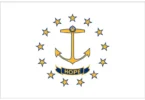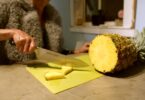September 29, 2014
Sunday Observer
The patenting of kratom, well-known for its traditional medicinal uses in Southeast Asia call into question the degree of actual innovation contained in the Japanese work.
by Edward Hammond
Japanese scientists have patented pain-killing drugs from kratom (Mitragyna speciosa), a well-known Southeast Asian medicinal plant. According to the researchers, from Chiba National University and Josai University, the kratom painkillers act like opium-derived analgesics (such as morphine) and are especially useful because they do not have some of the undesirable side effects of opiates. Patents have been issued in Japan and the United States, and patent applications may be pending elsewhere.
Kratom (Thai) or ketum (Malay) is a well-known plant native to Thailand, Malaysia, parts of Indonesia and the Philippines, and Papua New Guinea. Kratom has long had an important place in Southeast Asian traditional medicine. It is botanically related to coffee, but has stronger effects on its users. Because kratom can be abused as a recreational drug, its use is banned in many places.
Medicinal plants
In Southeast Asian traditional medicine, different preparations of kratom are used in wound dressings, to treat the effects of fever, as a sedative, and as a substitute for opium in treatment of addicts. Kratom leaves are also traditionally chewed or made into tea in areas of the Malaysian peninsula, although legal prohibitions now limit this practice.
In the early 2000s, Japanese researchers began analyzing compounds extracted from kratom as part of a program to assess medicinal plants. They identified one kratom compound, 7-hydroxymitragynine, as having particularly potent painkilling effects – considerably stronger, in fact, than morphine in animal experiments.
Yet this constituent of kratom was chemically distinct from opium poppy-derived drugs and did not paralyze the gastrointestinal system, a morphine side effect that limits the latter drug’s use. Convinced of 7-hydroxymitragynine’s pharmaceutical potential, the researchers then made chemical variations of it that are suitable for use as pharmaceuticals, and identified ways to manufacture the compounds (semi-) synthetically.
Jurisdictions
Chiba National University and Josai University have now obtained three patents on kratom-derived drugs: US patent 8247428, issued 21 August 2012, Japanese patent 5308352, issued 27 May 2013 and US patent 86480090, issued February 11, 2014. These patents do not appear to have entered into a regional and national phase in Europe, but may be pending or issued in other jurisdictions, whose data is not available online.The US patents claim 7-hydroxymitragynine-derived compounds as “matter”, and their use as veterinary drugs and human pharmaceuticals. The claims include any drug containing from 0.1% to 100% of the kratom compound in any conceivable pharmaceutical administration, ranging from pills to creams to aerosols.
There can be no question that traditional medicinal use of kratom very strongly anticipates the Japanese universities’ claims. Traditional use in wound dressings clearly suggests painkilling properties, as does kratom’s use to treat fevers and as a sedative.
And even more particularly, its traditional use as an opium substitute directly suggests kratom’s activity on opioid receptors, the same property of the compounds patented by Chiba and Josai.
These well-documented traditional medicinal uses of kratom call into question the degree of actual innovation contained in the Japanese work, as traditional knowledge guided the researchers to both kratom’s pain killing effects and indicated the specific mode of action of the patented compounds.
Illicit drug
Chiba National and Josai Universities are in the Tokyo metropolitan area. Whereas Chiba is a semi-governmental national university, Josai is a smaller private entity. With Japanese government support, the team of researchers that identified 7-hydroxymitragynine and then patented its derivatives is actively developing the compounds. One of the kratom-based drugs has been assigned an experimental drug name, MGM-16, and is being tested in animals.
Patent documents and other publications reviewed are silent on the origin of the kratom used by Chiba and Josai, although because the plant is widely known and trafficked internationally as an illicit drug, obtaining kratom samples was likely trivial.University records and publications indicate a relationship between the Pharmacognosy Department at Chulalongkorn University in Thailand and Hiromitsu Takayama, of the Chiba Graduate School of Pharmaceutical Sciences.
Takayama is listed as the lead inventor in the patents. There are no Thai co-inventors, and all patent and other documents reviewed are silent on questions of benefit sharing.
There is a very strong case to be made that the intellectual property claimed by Josai and Chiba National Universities in Japan is derived from and includes knowledge and innovation from Southeast Asian traditional medicines and their traditional users.
But no information could be located to suggest that appropriate benefit sharing measures are in place. If such agreements are in place, Chiba National and Josai Universities should make their details and counterparts public, so that Southeast Asia countries and the traditional knowledge holders may evaluate if they are appropriate and effective.
– Third World Network Features.






